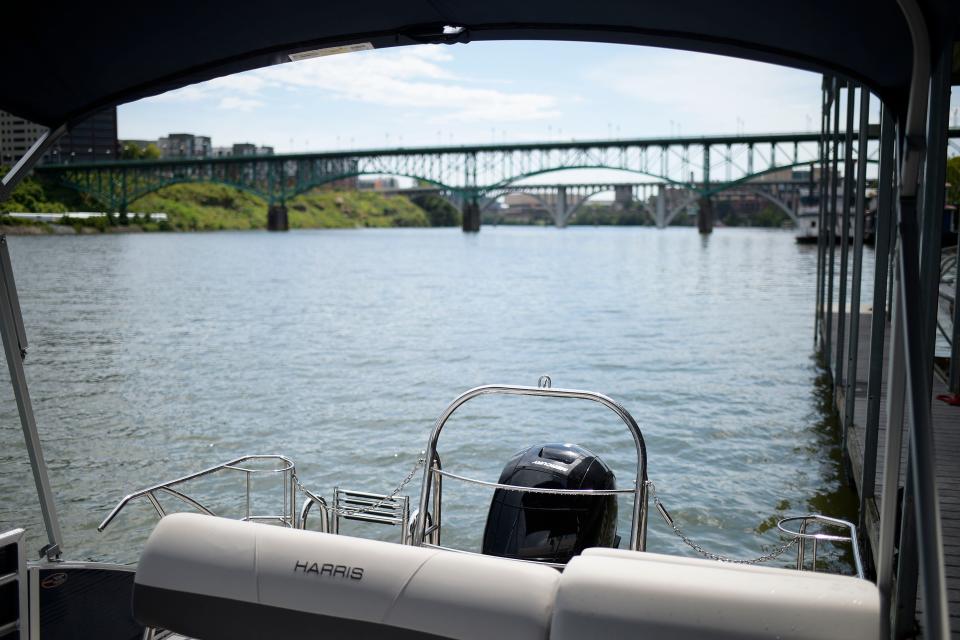Gay Street Bridge began with a $100 post-Civil War purchase | Opinion
As I drove across the Gay Street Bridge the other day, I reflected on its storied history. Its last repairs were in 2018, when it was closed for more than two months. "The road had to be closed due to a major trench just past the southern end of the bridge on Blount Avenue," said city spokesman Eric Vreeland. It had come a long way from the days when it was a mere pontoon bridge used by the military during the Civil War.
The initial effort to make it a civilian bridge came Dec. 26, 1865, when the Knox County government petitioned the quartermaster general of the United States asking that it be turned over to the county for the free use of the people. It had been advertised for sale, but no bids had been received. The quartermaster general agreed to give Knox County the bridge provided that no toll would be imposed upon United States troops, wagons or property using it. Knox County bought it for $100.

Five years later county officials realized that the bridge would not accommodate the needs of the county and began talks of building a real bridge across the river. The Press & Herald of Sept. 29, 1870, announced that the Bridge Commission had raised subscriptions of $25,000, but it would cost from $60,000 to $75,000. Later citizens were asked to vote for a bond measure to finance the bridge, but it failed to get the needed three-fourths vote.
Hear more Tennessee voices: Get the weekly opinion newsletter for insightful and thought-provoking columns.
Proponents of the bridge argued it would induce people to settle on the south side of the river. They said good roads would be constructed into North Carolina through Sevier and Blount counties that would bring thousands of people to Knoxville. They also reminded citizens that for about 30 days in each year, no crossing could be done on boats because of high water or winds.
Four months later after that initial vote, another one failed, on Jan. 31, 1871. The March 7, 1871, P&H advocated that Knox County issue bonds and stock in the bridge. Knox County Quarterly Court agreed to that and proposed $75,000 to build the bridge. On Aug. 3, 1871, the people overwhelmingly voted for the plan. The vote was 1,715 for and 69 against.
The question of whether to build a wooden or iron bridge, with cost the deciding factor, was discussed. The County Court appointed a commission to select a location for the bridge and to take charge of its construction. It recommended Gay Street as the best location. In its report the commission estimated the cost of the bridge with stone abutments, 15 feet high with wooden pillars, would cost $86,000. Another plan to build with only stone would cost $108,000.
The Sept. 14, 1873, issue of the P&H announced Oct. 7, 1873, as opening day for the bridge. "It is intended by the Bridge Commission to make the occasion a gala day, and with this intent they have invited the county and city authorities, the University, its faculty and cadet corps, the public schools, all benevolent orders and citizens, generally, to join us in the celebration. In addition, letters have been sent to the county courts of Sevier and Blount counties inviting the magistrates and the citizens of those counties to take part."
Unfortunately, there is no report on the festivities or what happened that day. The P&H ofOct. 8, 1873, does not exist. The Chronicle did not have the story, nor did the Whig.
Robert J. Booker is a freelance writer and former executive director of the Beck Cultural Exchange Center. He may be reached at 865-546-1576.
This article originally appeared on Knoxville News Sentinel: Opinion: Gay Street Bridge began with a $100 post-Civil War purchase

